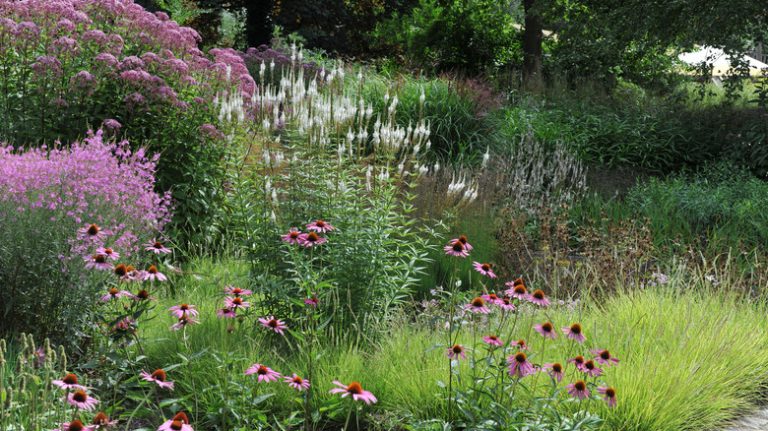Spring is the perfect time to keep a pot or two of petunias. These colorful and vibrant flowers are one of the easiest plants to grow and they can add instant beauty to any garden or balcony. Whether you have a greenhouse or a small balcony, petunias are the perfect choice for your gardening needs.
Petunias are frost-tender plants, so it’s best to wait until after the last frost before planting them in pots. There are many different varieties of petunias, from large and ruffled grandifloras to small and compact multifloras. You can choose the ones that best suit your gardening style and the space you have available.
One of the best tips for growing petunias in pots is to use a bloom-booster fertilizer. This will help the plants to produce more flowers and extend their blooming period. Petunias also prefer well-draining soil, so make sure to use a potting mix that is fertile and allows water to pass through easily.
When planting petunias in pots, it’s important to give them enough space to grow. Plant them about 6 to 12 inches apart, depending on the variety. Petunias are fast-growing and will soon fill out the pot, creating a beautiful display of flowers above the foliage.
These versatile plants can also be planted in hanging baskets or window boxes, where they will cascade and create a stunning display. Petunias are perennials in warmer climates, but they are often grown as annuals in colder regions.
One of the great advantages of growing petunias in pots is that you can easily move them around to experiment with different locations and ideas. They also make excellent container plants for decks, patios, and other outdoor spaces.
When it comes to caring for petunias, they are generally low-maintenance. However, they can be susceptible to diseases such as petunia blight or root rot. It’s important to keep an eye out for any signs of disease and take immediate action to prevent further spread.
Overall, petunias are a popular choice for both beginner and experienced gardeners. With their wide range of colors, their fast-growing nature, and their ability to thrive in pots, they are an excellent choice for adding instant beauty to your garden or balcony. So why not give them a try and see the amazing results for yourself?
Petunia
Petunias are popular flowering plants that are often grown in pots. They are known for their beautiful blooms and come in a variety of colors and heights. Growing petunias in pots is a great way to add color and interest to your garden or outdoor space.
When it comes to growing petunias, they are relatively easy to care for. They can be grown in various climates and require little care. Petunias will thrive in well-drained soil and prefer full sun, although they can tolerate some shade. They can be planted in pots or directly in the ground, making them a versatile choice for any gardener.
There are several different types of petunias to choose from, including double petunias, milliflora petunias, and mini petunias. Each type has its own unique characteristics and growing conditions, so it’s important to choose the right petunias for your garden.
When planting petunias, it’s best to start them from seed in trays or pots. Petunia seeds are tiny, so be careful not to plant them too deep. It’s also important to keep the soil moist but not waterlogged. Petunias typically take about 10-12 weeks to flower from seed, so be patient and wait for the beautiful blooms to appear.
Petunias are heavy feeders and will benefit from regular fertilizing. You can use a balanced fertilizer every two weeks or a slow-release fertilizer at the time of planting. Be sure to follow the instructions on the fertilizer packaging for best results.
Caring for petunias is relatively straightforward. They will need regular watering, especially during hot summer months. Be sure to water petunias at the base of the plant to avoid getting the foliage wet, as this can lead to disease. Petunias also benefit from deadheading, or removing spent blooms, to encourage more flowers to grow.
One popular variety of petunia is the “Evelyn” double petunia, which is known for its stunning blooms and delicious fragrance. Another popular choice is the “Zinnia Sugar ‘n Spice” petunia, which has vibrant colors and a compact growth habit.
Petunias are also suitable for use as groundcover in flower beds or borders. They can also be planted in hanging baskets or containers for a stunning display of color. Petunias can be grown in USDA zones 9-11, although they can be grown as annuals in cooler regions.
In conclusion, growing petunias in pots is a great way to add beauty and color to your garden or outdoor space. With their wide range of colors and hardy nature, petunias are a popular choice for gardeners of all levels of experience. Follow these tips for successful petunia growing and enjoy their beautiful blooms all season long.
How to grow petunias
Petunias are popular flowers for both garden beds and containers. They are known for their vibrant colors and long flowering season. Whether you have a small window garden or a large backyard, petunias can add a beautiful touch to your outdoor space.
When it comes to growing petunias, there are a few important factors to consider. First, choose the right type of petunias to plant. There are three main types: grandifloras, multifloras, and supertunias. Grandifloras are known for their large, ruffled flowers and are best suited for containers. Multifloras have smaller, more abundant flowers and are great for groundcover. Supertunias are a hybrid of the two and combine the best characteristics of both.
Petunias can be grown from seeds, but it’s easier to start with young plants that you can purchase from a nursery or garden center. Plant the petunias in well-drained soil or potting mix. If you are planting them in containers, make sure the containers have drainage holes to prevent waterlogging. Petunias prefer full sun, so choose a sunny location for planting.
When planting petunias, consider the weather conditions in your area. Petunias are warm-weather plants and thrive in zones 1 to 3. They can be planted in the spring after the danger of frost has passed. If you live in a region with hot summers, it’s best to plant petunias in containers so you can move them to a shaded area during the hottest part of the day.
Petunias are fairly low-maintenance plants, but they do require some care to thrive. Water the plants regularly, keeping the soil moist but not waterlogged. Check the moisture level of the soil regularly, especially during hot, dry weather. Petunias benefit from regular fertilizing, especially if they are grown in containers. Use a bloom-booster fertilizer to promote vigorous flowering.
One of the advantages of growing petunias is the wide variety of colors and patterns available. From solid colors to variegated blooms, petunias can add a burst of color to your garden. They are also available in different sizes, from small flowers to large, showy blossoms. Consider planting petunias with other annuals or perennials to create a vibrant flowerbed.
Petunias are generally disease-resistant, but they can be susceptible to some common diseases like powdery mildew and root rot. To prevent these diseases, make sure to provide good air circulation around the plants and avoid overwatering. Remove any dead or diseased flowers or leaves to prevent the spread of disease.
In conclusion, growing petunias can be a rewarding and colorful experience for gardeners of all skill levels. Whether planted in ground beds or containers, petunias will bring beauty and vibrancy to your outdoor space all season long. With proper care and attention, your petunias will thrive and become a stunning focal point in your garden.
How to care for petunias
When it comes to caring for petunias, there are a few important considerations to keep in mind. Petunias are fast-growing and quite hardy, but they do require regular care to thrive.
First and foremost, it’s important to choose the right location for your petunias. They can be grown in pots or in the ground, but regardless of where you choose to plant them, they need to be in a spot that receives at least 6-8 hours of direct sunlight every day. Petunias thrive in warm weather, so they should be planted after the last frost of spring or in early autumn if you’re in a frost-free area.
In terms of watering, petunias tend to like consistently moist soil, so regular watering is essential. They can wilt quickly in hot weather, so be sure to check the moisture level of the soil daily and water as needed. It’s best to water deeply, ensuring that the water reaches the roots of the plants, rather than just moistening the top layer of soil. However, be careful not to overwater, as petunias don’t tolerate soggy soil well.
Fertilizing is also important for promoting healthy petunia growth. You can use a balanced fertilizer every two to three weeks, or you may opt for a slow-release fertilizer that only needs to be applied once at the beginning of the growing season. This will provide the necessary nutrients for the petunias to grow vigorously and produce abundant flowers.
Pests can be a concern when it comes to petunia care, especially aphids and spider mites. Keep an eye out for any signs of these pests and take action immediately if you spot any. Applying soapy water or using organic pest control products can help keep these pests at bay.
Pruning is another important aspect of caring for petunias. Regularly removing any spent or withered flowers will encourage more blooming and keep the plants looking tidy. It’s best to prune approximately one-third to one-half of the plant’s growth every three to four weeks, which will help maintain its shape and promote healthy new growth.
In summary, caring for petunias involves providing them with the right growing conditions, including plenty of sunlight and regular watering. Fertilizing and pruning as needed will also contribute to healthy growth and abundant flower production. Keep an eye out for pests and take action if necessary. By following these guidelines, you can ensure your petunias thrive and bring color and beauty to your garden or containers all season long.
| Key considerations for caring for petunias |
|---|
| Choose a location with 6-8 hours of direct sunlight |
| Water regularly, keeping soil consistently moist |
| Fertilize every two to three weeks or use slow-release fertilizer |
| Watch for pests like aphids and spider mites, take action if needed |
| Prune regularly to remove spent flowers and promote new growth |



